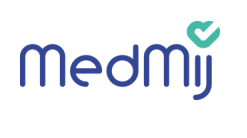MedMij FHIR use case GGZ Zibs 2017



Introduction
The page describes the FHIR requirements for exchanging GGZ information between the patients and healthcare providers in the context of MedMij. The overarching FHIR requirements, described in the technical IG guide homepage, are applicable here.
Actors involved
| Actors | Systems | FHIR Capability Statements | |||
|---|---|---|---|---|---|
| Name | Description | Name | Description | Name | Description |
| Patient | The user of a personal healthcare enviorment. | PHR | Personal health record | FHIR Client requirements | |
| Healthcare professional | The user of a XIS | XIS | Healthcare information system | FHIR Server requirements | |
Boundaries and Relationships
The GGZ use case has similarities and differences with other use cases such as the BgZ, Medication Process, Vital Signs, GP Patient Data and Lab Results. These use cases use much of the same HCIM based FHIR profiles for exchanging information. Wherever possible every attempt is made to re-use the profiles as used in the BgZ. The GGZ use case also has unique profiles compared to the aforementioned use cases. In addition, it has a CareTeam profile without an underlying HCIM. A second thing to note is that while the selection criteria of certain sections like procedure do not match with the BgZ or other use cases, this does not affect the profiles in use. For example, it is irrelevant for the response profile for procedures if you request ' surgical procedures' or 'every procedure'.
Use case: retrieve GGZ information
List of invocations

This FHIR implementation guide assumes that the PHR system is able to make a connection to the XIS that contains the patients GGZ information. It does not provide information on finding the right XIS nor does it provide information about security. These infrastructure and interface specifications are described in the 'Afsprakenstelsel'.
Client - PHR
The PHR system requests the patient's GGZ information using individual search interactions over multiple FHIR resources. The client can use multiple individual search operations based on specified search queries. A search interaction can be performed by an HTTP GET or command as shown:
GET [base]/[type]/{?[parameters]{&_format=[mime-type]}}
The table below shows in the first three columns the HCIM name in Dutch, in English and what HCIM content is requested. The last column shows the FHIR search queries to retrieve this information. The queries are based on the functional GGZ information exchange requirements, which are stated in the functional overview and shown in detail in this table. The queries, and more profoundly the response messages follow the profiles listed in the list of StructureDefinition section. The response content shall conform to these StructureDefinitions.
This FHIR implementation guide assumes that the PHR system is able to make a connection to the right XIS that contains the patient's information. It does not provide information on finding the right XIS nor does it provide information about security. Moreover, each transaction is performed in the context of a specific authenticated patient, for whose context (token) has been established using the authentication mechanisms described in the 'Afsprakenstelsel'. Each XIS Gateway is required to perform filtering based on the patient associated with the context for the request, so only the records associated with the authenticated patient are returned. For this reason, search parameters should not be included for patient identification.
| HCIM NL | HCIM EN | Content | Search URL |
|---|---|---|---|
| Patient | Patient | Identification, birthdate, gender, deceasedindicator, contact details, marital status, legal status, and general practitioner (practitioner or organization) | GET [base]/Patient?_include=Patient:general-practitioner |
| BurgerlijkeStaat | MaritalStatus | Known marital status | see Patient |
| Betaler | Payer | Insurance information | GET [base]/Coverage?_include=Coverage:payor:Patient&_include=Coverage:payor:Organization |
| BehandelAanwijzing | TreatmentDirective | All known treatment directives | GET [base]/Consent?category=http://snomed.info/sct|11291000146105 |
| Wilsverklaring | AdvanceDirective | All known advance directives | GET [base]/Consent?category=http://snomed.info/sct|11341000146107 |
| JuridischeStatus | LegalStatus | Known legal status | see Patient and FreedomRestrictingMeasures procedure |
| VrijheidbeperkendeMaatregelen | FreedomRestrictingMeasures | All known freedom restricting measures | GET [base]/Procedure?category=http://snomed.info/sct|225317005 |
| Contactpersoon | Contact | First relation/contact | see Patient.contact |
| FunctioneleOfMentaleStatus | FunctionalOrMentalStatus | All known functional / mental status | GET [base]/Observation?category=http://snomed.info/sct|118228005,http://snomed.info/sct|364644000 |
| Probleem | Problem | All known problems | GET [base]/Condition |
| Woonsituatie | LivingSituation | All known living situations | GET [base]/Observation?code=http://snomed.info/sct|365508006 |
| Druggebruik | DrugUse | All known drug use | GET [base]/Observation?code=http://snomed.info/sct|228366006 |
| Alcoholgebruik | AlcoholUse | All known alcohol use | GET [base]/Observation?code=http://snomed.info/sct|228273003 |
| Tabakgebruik | TobaccoUse | All known tobacco use | GET [base]/Observation?code=http://snomed.info/sct|365980008 |
| Gezinssituatie | FamilySituation | All known family situations | GET [base]/Observation?code=http://snomed.info/sct|365470003 |
| GezinssituatieKind | FamilySituationChild | All known family situations of child patient | GET [base]/Observation?code=http://snomed.info/sct|55801000146105 |
| Taalvaardigheid | LanguageProficiency | Known language proficiency | see Patient |
| ParticipatieInMaatschappij | ParticipationInSociety | All known participation in society status | GET [base]/Observation?code=http://snomed.info/sct|314845004 |
| HulpVanAnderen | HelpFromOthers | All known help from others | GET [base]/CarePlan?category=http://snomed.info/sct|243114000 |
| LaboratoriumUitslag | LaboratoryTestResult | Last known laboratory results per type | GET [base]/Observation/$lastn?category=http://snomed.info/sct|275711006&_include=Observation:related-target&_include=Observation:specimen |
| AlgemeneMeting | GeneralMeasurement | All known questionaire (for example HONOS, OQ-45, CQ index, 4DKL) outcome scores. | GET [base]/Observation?category=http://hl7.org/fhir/observation-category|survey |
| Verrichting | Procedure | All known GGZ procedures | GET [base]/Procedure |
| TekstUitslag | TextResult | All known text results of GGZ procedures | GET [base]/DiagnosticReport |
| - | - | CareTeam: primary healthprofessional and other relevant healthprofessionals including the healthcare provider. | GET [base]/CareTeam?_include=CareTeam:participant |
| Zorgverlener | HealthProfessional | General Practitioner of the patient | see Patient, CareTeam |
| Zorgaanbieder | HealthProvider | General Practitioner's organization of the patient | see Patient, CareTeam |
Server - XIS
Important sections of the FHIR specification for a server in this use case are the RESTful API section the search section.
Response to resource requests
If the search succeeds, the server SHALL return a 200 OK HTTP status code and the returned content SHALL be a Bundle with type = searchset containing the results of the search as a collection of zero or more resources in a defined order. The returned content SHALL conform to the StructureDefinition applicable for the specific HCIM request. The list of a StructureDefinitions relevant for this use case is shown in the following paragraph: List of StructureDefinitions
The result collection can be long, so servers may use paging. If they do, they SHALL use the method described below (adapted from RFC 5005 (Feed Paging and Archiving ) for breaking the collection into pages if appropriate. The server MAY also return an OperationOutcome resource within the searchset Bundle entries that contains additional information about the search; if one is sent it SHALL NOT include any issues with a fatal or error severity, and it SHALL be marked with a Bundle.entry.search.mode of outcome.
In order to allow the client to be confident about what search parameters were used as criteria by the server, the server SHALL return the parameters that were actually used to process the search. Applications processing search results SHALL check these returned values where necessary. For example, if the server did not support some of the filters specified in the search, a client might manually apply those filters to the retrieved result set, display a warning message to the user or take some other action.
In the case of a RESTful search, these parameters are encoded in the self-link in the bundle that is returned:
<link>
<relation value="self"/>
<url value="http://example.org/Patient?identifier=[Patient-ID]/>
</link>
Link to the relevant FHIR specification: http://hl7.org/fhir/STU3/http.html#search
Handling errors
If the search fails (cannot be executed, not that there are no matches), the return value is a status code 4xx or 5xx with an OperationOutcome. An HTTP status code of 403 signifies that the server refused to perform the search, while other 4xx and 5xx codes signify that some sort of error has occurred. The HTTP status code 404 is returned if a XIS did not implement an endpoint used in a request by a PHR. When the search fails, a server SHOULD return an OperationOutcome detailing the cause of the failure. For example, in case of a not implemented FHIR endpoint, the OperationOutcome would state that the resource type is not supported. Note: an empty search result is not a failure.
Common HTTP Status codes returned on FHIR-related errors (in addition to normal HTTP errors related to security, header and content type negotiation issues):
- 400 Bad Request - search could not be processed or failed basic FHIR validation rules
- 401 Not Authorized - authorization is required for the interaction that was attempted
- 404 Not Found - resource type not supported, or not a FHIR end-point
In some cases, parameters may cause an error. For instance:
- A parameter may refer to a non-existent resource e.g.
GET [base]/Observation?subject=101, where "101" does not exist - A parameter may refer to an unknown code e.g.
GET [base]/Observation?code=loinc|1234-1, where the LOINC code "1234-1" is not known to the server - A parameter may refer to a time that is out of scope e.g.
GET [base]/Condition?onset=le1995, where the system only has data going back to 2001 - A parameter may use an illegal or unacceptable modifier e.g.
GET [base]/Condition?onset:text=1995, where the modifier cannot be processed by the server - A data time parameter may have incorrect format e.g.
GET [base]/Condition?onset=23%20May%202009 - A parameter may be unknown or unsupported
Where the content of the parameter is syntactically incorrect, servers SHOULD return an error. However, where the issue is a logical condition (e.g. unknown subject or code), the server SHOULD process the search, including processing the parameter - with the result of returning an empty search set, since the parameter cannot be satisfied.
In such cases, the search process MAY include an OperationOutcome in the search set that contains additional hints and warnings about the search process. This is included in the search results as an entry with search mode = outcome. Clients can use this information to improve future searches.
Link to relevant FHIR specification: http://hl7.org/fhir/STU3/search.html#errors
Interactions, operations, search parameters
Interactions
The following logical interactions are needed for the GGZ use case:
Operations
The following operation is needed for this use case.
The lastn query meets the common need for searching for the most recent or last n=number of observations for a subject. For example, retrieving the last 5 temperatures for a patient to view trends or fetching the most recent laboratory results. The link will provide more detailed information and examples regarding this operation.
Search parameters
The following search parameter types and search result parameters need to be supported for this use case.
Search parameter types:
Search result parameters:
List of StructureDefinitions
The profiles represent their entire respective HCIM and are applicable in a broader context than the exchange of GGZ information.
* LegalStatus is a single concept of the HCIM FreedomRestrictingMeasures and does not represent a complete HCIM yet. This concept will become an indepentend HCIM in a future release of the HCIM.
Terminology, NamingSystems, Mappings
Terminology
Relevant ValueSets can be found through the ValueSet bindings in the listed StructureDefinitions. All ValueSets can be found here here and can be downloaded as a .zip in XML or JSON format.
NamingSystems
Relevant NamingSystems can be found here.
Mappings
Relevant HCIM to FHIR value set mappings can be found here. All profiles include HCIM mappings. HCIM concepts are mapped to the corresponding FHIR elements using the HCIMs concept id. The top of the StructureDefinition contains meta information regarding the HCIM mapping, such as the name and uri of the HCIM. In the StructureDefinition elements, the corresponding HCIM ID is given including the mapping meta information id. This is illustrated in the following example.
<StructureDefinition>
<id value="nl-core-patient" />
.....
<mapping>
<identity value="hcim-patient-v3.1-2017EN"/>
<uri value="https://zibs.nl/wiki/Patient-v3.1(2017EN)"/>
<name value="HCIM Patient-v3.1(2017EN)"/>
</mapping>
.....
<element id="Patient.name">
<path value="Patient.name" />
<short value="NameInformation" />
<alias value="Naamgegevens" />
<type>
<code value="HumanName" />
<profile value="http://fhir.nl/fhir/StructureDefinition/nl-core-humanname" />
</type>
<mapping>
<identity value="hcim-patient-v3.1-2017EN"/>
<map value="NL-CM:0.1.6"/>
</mapping>
</element>
.....
</StructureDefinition>